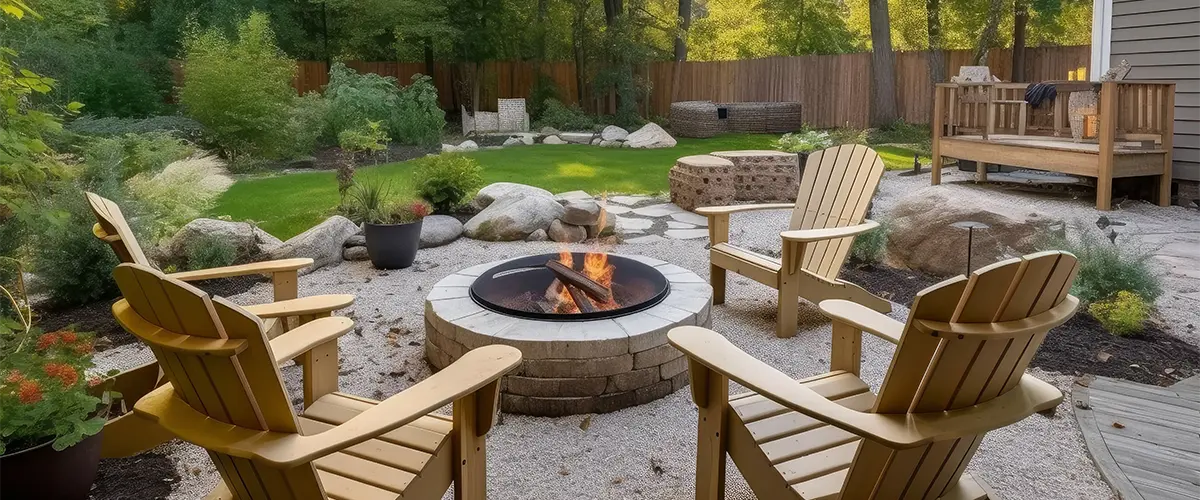Gardening is often seen as a peaceful, rewarding hobby—a chance to cultivate beauty, nurture life, and connect with nature. Whether you’re tending to a small flower bed or managing a sprawling vegetable garden, the act of growing plants can be meditative and fulfilling. However, beneath the surface of this tranquil activity lies an intricate dance of care, technique, and attention to detail. While a green thumb is essential, having the right tools at your disposal can make all the difference between a flourishing garden and a patch of frustration.
In this article, we will explore why a well-thought-out gardening and outdoor strategy hinges on the right tools. From efficiency and precision to long-term sustainability, the use of tools in your outdoor space transforms both the process and the outcome of your gardening efforts.
1. Efficiency and Time Management
One of the primary reasons tools are indispensable in any gardening strategy is that they dramatically improve efficiency. Gardening is an endeavor that requires time and patience. Whether you’re weeding, planting, trimming, or pruning, each task takes time, and the more efficiently you can perform these tasks, the more you can accomplish in a given period.
For instance, a hand trowel helps in digging small holes for planting with ease, allowing you to plant seeds or seedlings with precision. Without such tools, you would be forced to use your hands or rudimentary instruments, which would slow you down and cause unnecessary strain. Similarly, a pair of shears can trim your bushes or shrubs in a fraction of the time it would take with manual cutting, ensuring that your plants stay healthy and well-shaped.
The right tools save time, enabling gardeners to spend more time nurturing the garden rather than struggling with inefficient methods. In a world where time is a luxury, optimizing your gardening tasks with specialized tools allows you to maintain your outdoor space without it taking over your entire schedule.
2. Precision and Care
Gardening requires a delicate balance of care and precision, and the tools you use can make a significant difference in the level of attention you give each plant. A spade, for example, allows you to dig with controlled depth and width, making it easier to remove weeds, plant new growth, or move soil with minimal disruption to surrounding plants. Similarly, pruners or secateurs enable you to trim branches and stems without causing harm to the plant, ensuring that it continues to grow healthily.
Without the proper tools, it’s all too easy to damage plants unintentionally. A dull blade or the wrong-sized tool can result in jagged cuts, bruised stems, or torn roots, which can stress your plants and leave them vulnerable to disease or pest attacks. For more delicate tasks like grafting or shaping bonsai trees, precision tools such as grafting knives or bonsai shears are crucial to achieving clean cuts that promote healthy healing and growth.
Moreover, using tools designed for specific purposes helps you approach gardening with a higher degree of care. Instead of using a general-purpose shovel for every task, employing specialized tools allows you to tend to each plant or section of your garden with a greater focus on its needs. Tools thus enhance your ability to provide the exact type of attention your plants require to thrive.
3. Physical Health and Comfort
Gardening can be a physically demanding activity, especially if you’re working on large plots of land or undertaking heavy tasks like digging or hauling soil. Over time, repetitive motions can lead to strain or injury. This is where the ergonomic design of modern gardening tools plays a crucial role. Tools like long-handled hoes or weed pullers reduce the need to bend down constantly, minimizing back pain and promoting better posture. The right gloves protect your hands from blisters and cuts, while cushioned grips on rakes, spades, and forks ensure comfort during prolonged use.
In addition to promoting physical well-being, tools can prevent the exhaustion that often accompanies outdoor work. Power tools like electric hedge trimmers or lawnmowers ease the physical burden of yard maintenance. They reduce the time and effort required for tasks that would otherwise be tiring and time-consuming, leaving you with more energy to enjoy the fruits of your labor.
By selecting tools designed with your health and comfort in mind, you reduce the risk of injury and fatigue, making gardening a more enjoyable and sustainable activity in the long run.
4. Long-Term Sustainability
A well-planned gardening strategy isn’t just about immediate results; it’s about fostering long-term health for both your garden and the environment. Tools play an essential role in ensuring the sustainability of your outdoor efforts. Using the right tools for soil aeration, mulching, and composting, for example, promotes soil health, improves water retention, and encourages beneficial microbial activity. The use of high-quality garden tools ensures that these processes are conducted properly, supporting the ongoing vitality of your garden year after year.
Additionally, sustainable tools—such as hand-powered tools or those made from eco-friendly materials—help reduce your environmental footprint. When you use tools that don’t rely on electricity or fuel, you’re making a conscious choice to minimize energy consumption and reduce your reliance on non-renewable resources. In a world that increasingly values sustainability, selecting environmentally-friendly tools aligns your gardening practice with broader ecological goals.
Furthermore, high-quality tools, when properly maintained, can last for many years. Investing in durable, well-crafted tools is not only a wise financial decision but also a step toward reducing waste. Instead of frequently replacing broken or low-quality tools, a well-maintained set of premium tools ensures that your gardening strategy remains consistent and sustainable over time.
5. Creative Expression and Innovation
Finally, tools unlock the potential for creativity in gardening. Whether you’re designing intricate flower beds, creating topiary art, or experimenting with different planting techniques, having a diverse toolkit allows you to think beyond the basics. Tools like garden planters, edging devices, and specialized pruning tools encourage innovation in garden design. With these tools, gardeners can experiment with new ideas, textures, and structures that would otherwise be difficult to achieve.
Moreover, when tools are used thoughtfully, they can help bring a sense of order and beauty to your outdoor space. Precision tools enable gardeners to cut clean lines, maintain neat edges, and craft a polished aesthetic. Whether you’re constructing a raised garden bed, designing a vegetable patch, or even setting up a garden path, the right tools allow your creativity to flourish, transforming a simple backyard into a vibrant, organized oasis.
Conclusion
The role of tools in gardening and outdoor strategy cannot be overstated. While a passionate gardener’s skills and knowledge are the foundation for a successful garden, the right tools enhance both the process and the outcome. Tools improve efficiency, allow for precision and care, support physical well-being, promote sustainability, and inspire creative expression. By thoughtfully integrating tools into your gardening strategy, you not only simplify the tasks at hand but also enrich the experience of cultivating your outdoor space. The next time you head into your garden, consider how the right tool can elevate your work and transform your gardening efforts into something truly extraordinary.




